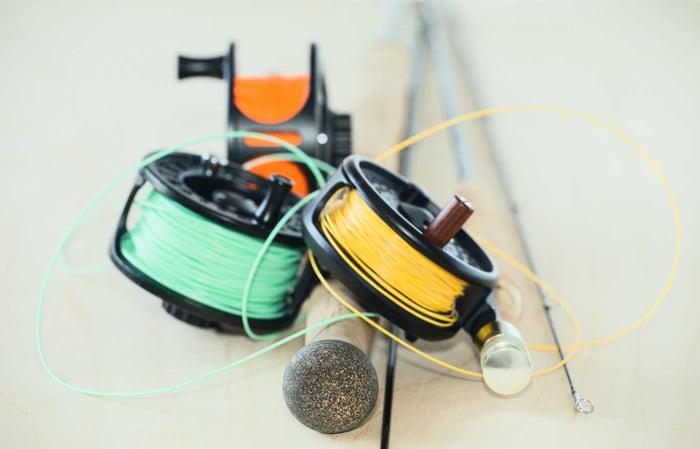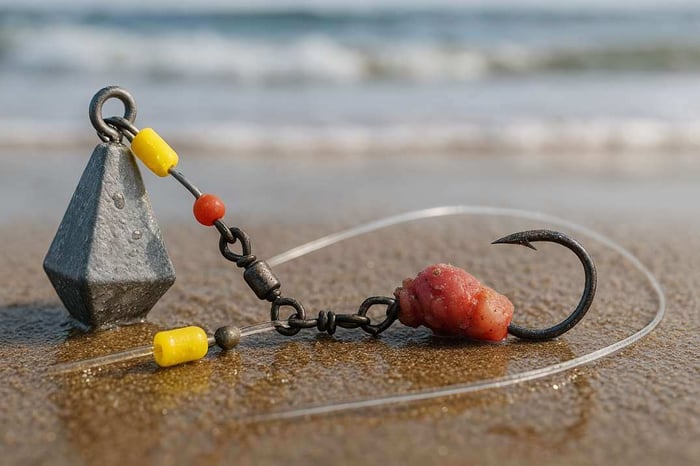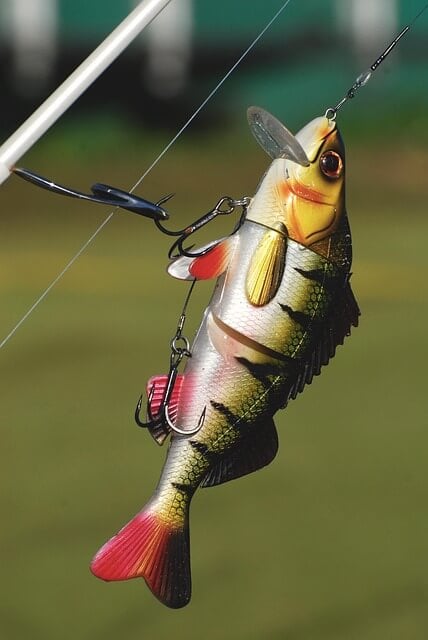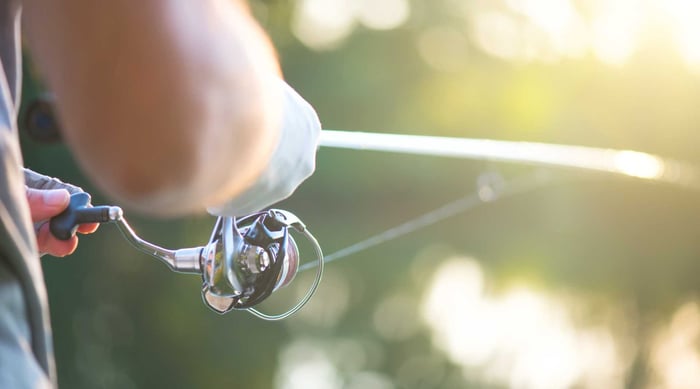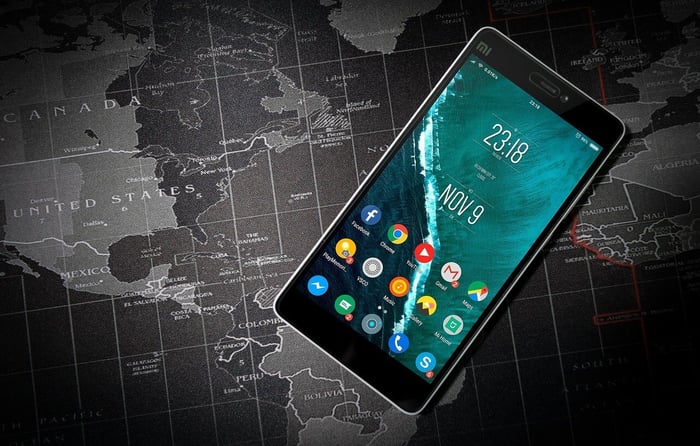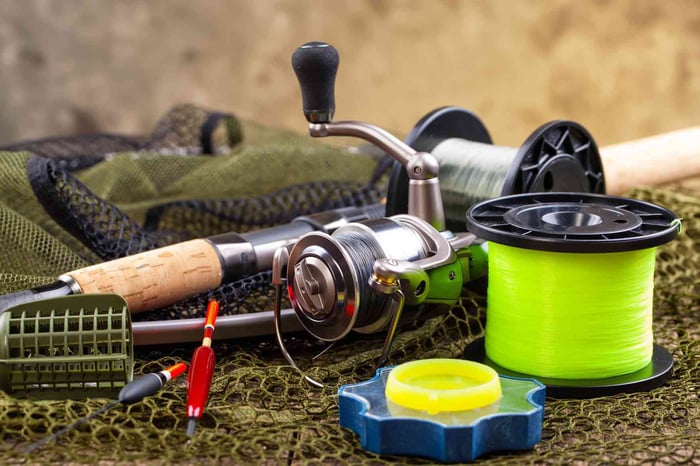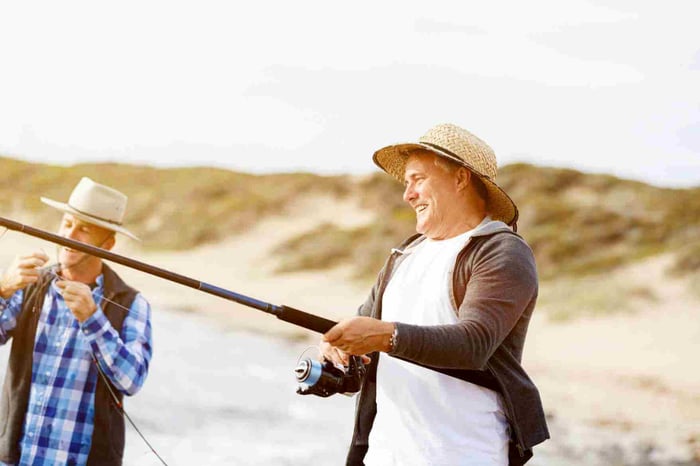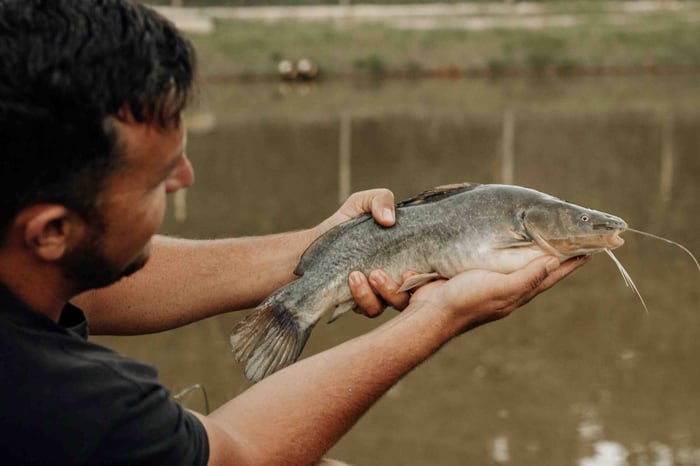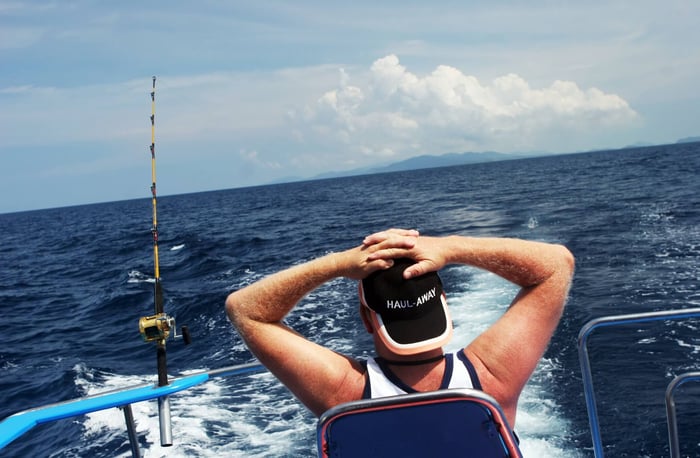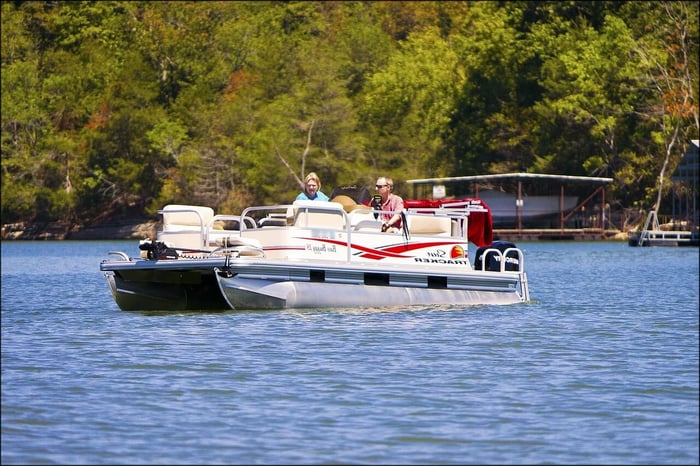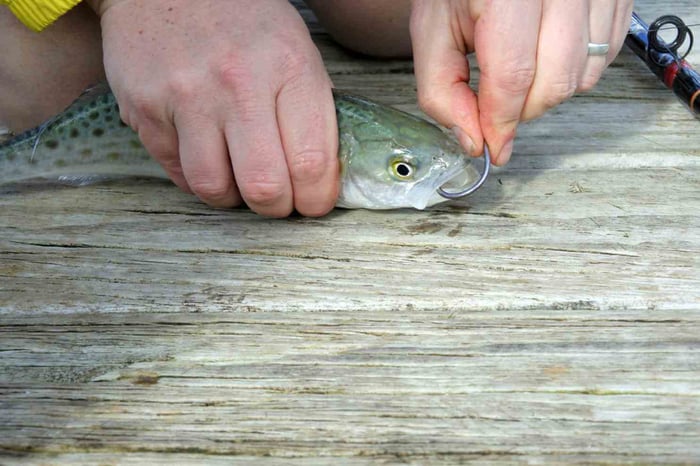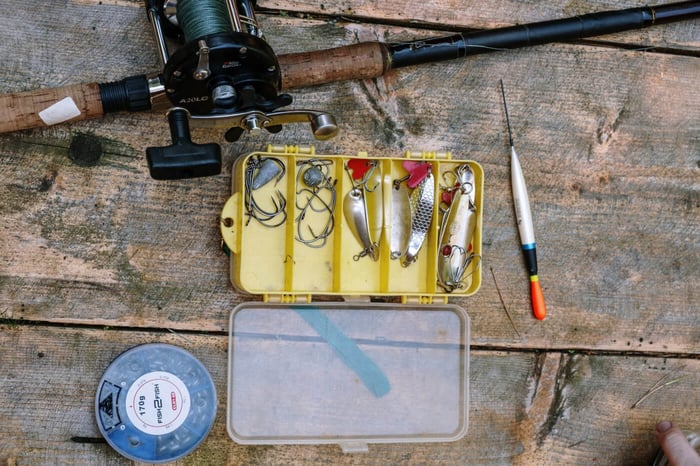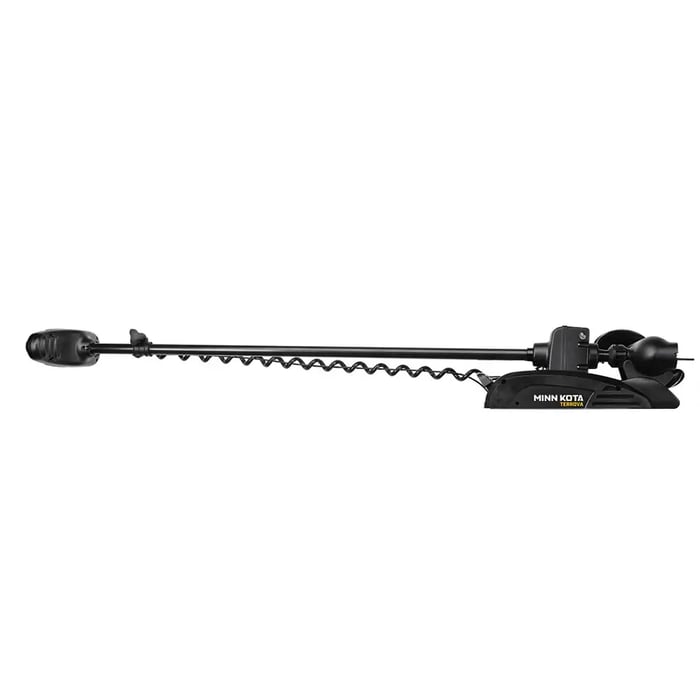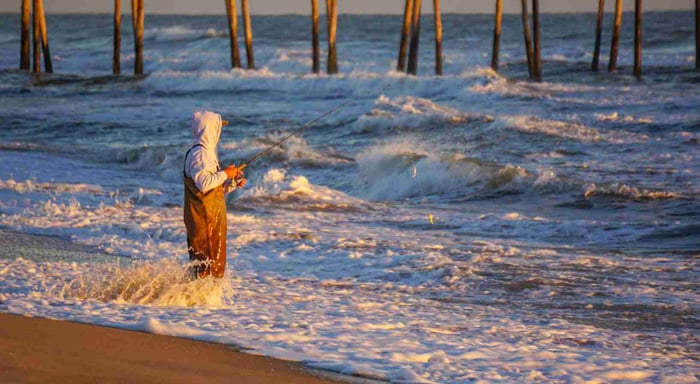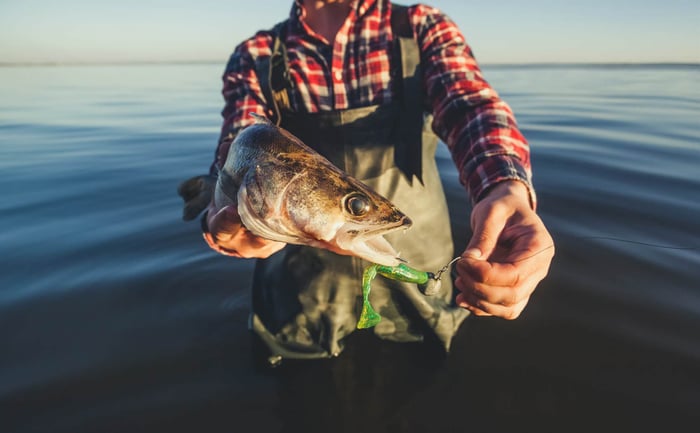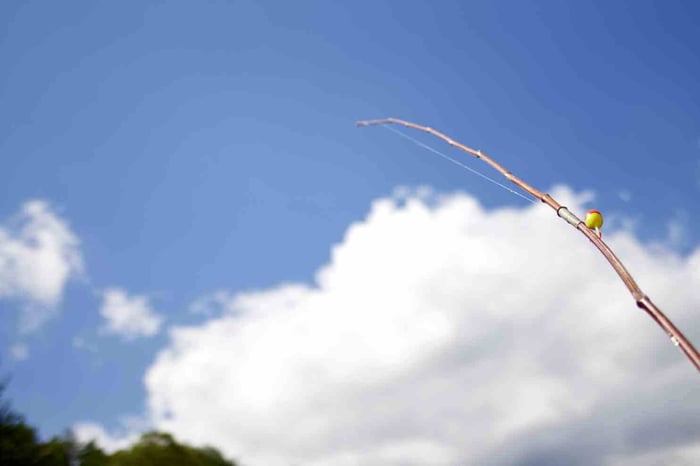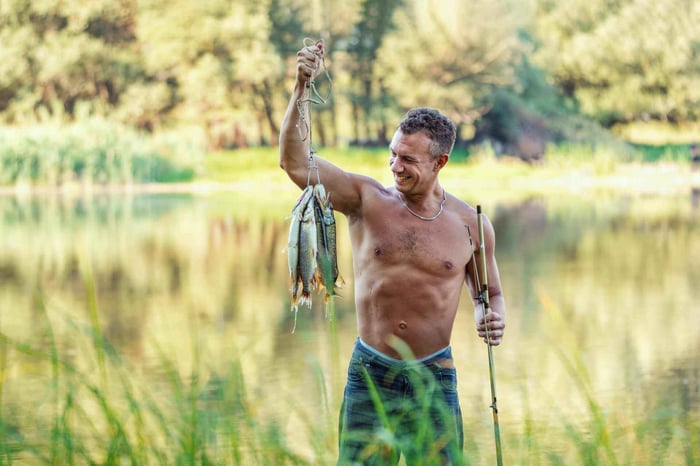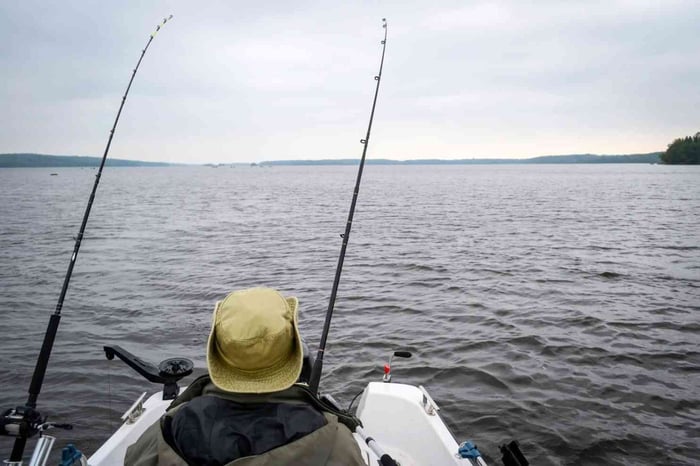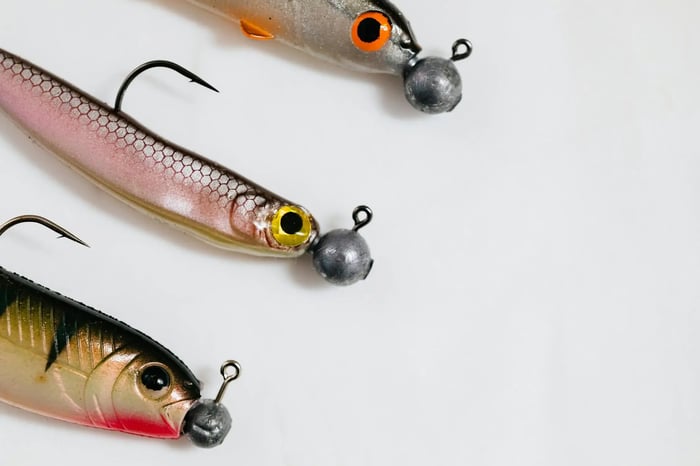Table of Contents
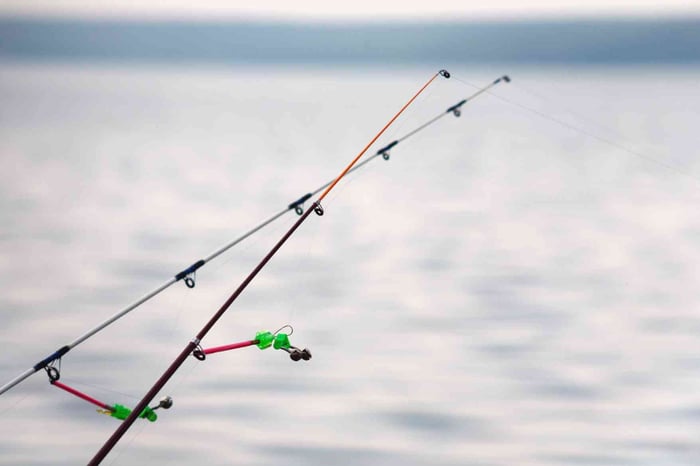
The choice of fishing line makes up every cast, every hookset, and every battle with a fish.
A reel or rod can't do its job unless the line serves the conditions.
Most anglers learn this the hard way.
They knot up a lure, cast perfectly, and then miss a fish due to the line having stretched too far or broken in thick cover.
Little subtleties in line performance can make all the difference in a good day. And so, it becomes a tale of one of those...you know, the one that got away.
Two of the most popular choices are braided line and mono.
Both have found their way onto spools around the globe.
(1) Braid provides strength and sensitivity that can make it feel like a direct link to the lure.
(2) Mono possesses forgiveness and versatility that ensure it is trustworthy in most circumstances.
Neither is ideal. Each excels in some waters, with some lures, and against some fish.
In this article, we'll discuss why there is no one "winner." Fishing isn't like that.
Things change. Fish act differently. People have their own fishing styles.
And honestly? The best line is the one that fits those conditions.
By realizing how braid and mono are different, and when to use each, fishermen can make decisions that enhance outcomes on the water.
It's an easy goal. Land more fish, lose fewer, and have confidence with every tightened line.
Understanding the Basics
Fishing lines can appear basic, but the way they're built alters literally everything about how they operate.
The argument of braided line vs mono is one that nearly every angler has to deal with at one time or another. It's pretty much a phase, really.
It's just so important to know how each of them functions.
Not only that, but also to know why most fishermen interchange them regularly.
Hopefully, we'd get to know how to choose the appropriate lines for ourselves.
✓ Monofilament Fishing Line
Monofilament line is built from one strand of nylon.
This construction makes mono line the original design.
It's also the first EVER line that most fishermen have ever fished with.
It has this very natural stretch. Hence, it reduces shock during a fight.
That same stretch also holds trebles in place when a fish jolts at the boat.
What's more? Mono actually floats!
This makes it ideal for topwater baits and presentations.
With its wider diameter than braid, it provides good abrasion resistance.
It's very helpful, especially when you're near sharp rocks or other cover.
Mono is simple to knot, casts well on spinning reels, and has forgiveness for newbies.
Most experienced anglers continue to favor mono fishing line for crankbaits, subsurface baits, and tight-quarters bass fishing.
The common denominator really is just that in these instances, cushion and control are more important than brute strength.
✓ Braided Fishing Line
Braided line is constructed of woven strands.
These strands provide it with a very thin diameter but with great strength.
Heavy braid can lift fish out of heavy cover or thick grass where mono would slip.
Light braid allows smaller reels to handle more line.
Plus, it is very much capable of casting the same distance without weighing as much.
It does not stretch, so it provides a lot of sensitivity and fast feedback on the lure.
This makes braid an excellent line for power fishing, bed fishing, and long casting over shallow flats.
Most offshore anglers rely on heavy braid as a mainline.
The very common thing they pair it with is a fluorocarbon leader. It's attached directly with a double uni knot for low visibility.
But why compare?
Mono and braid do not play alike on the water.
We compare because then we know what to pair line with fishing use, from fly fishing in open water to dragging large fish out of thick vegetation.
I guess what I'm trying to point out is that there is no single, correct answer.
The appropriate line is the line that suits the conditions, the species, and the reel in your hand.
Braid Vs. Mono
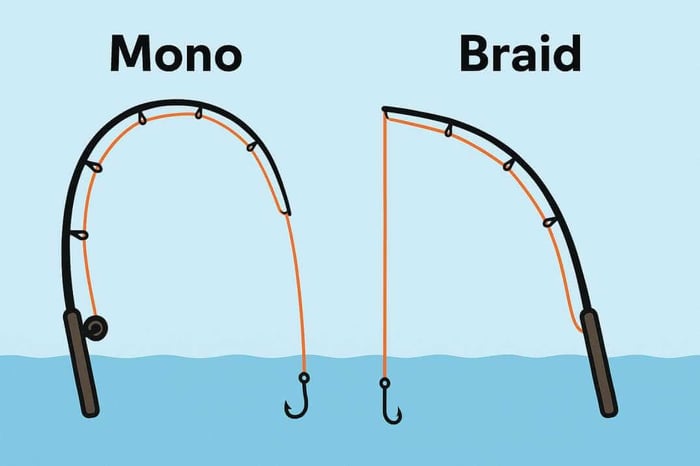
All anglers eventually wonder the same thing: which line is best?
The reality is that braided line vs mono is a matter of trade-offs.
Both work pretty well when held by the right hands, but they hold water very differently.
If you realize those differences, you can choose the appropriate line for your reel, for your technique, and for the fish you target.
How about their strengths?
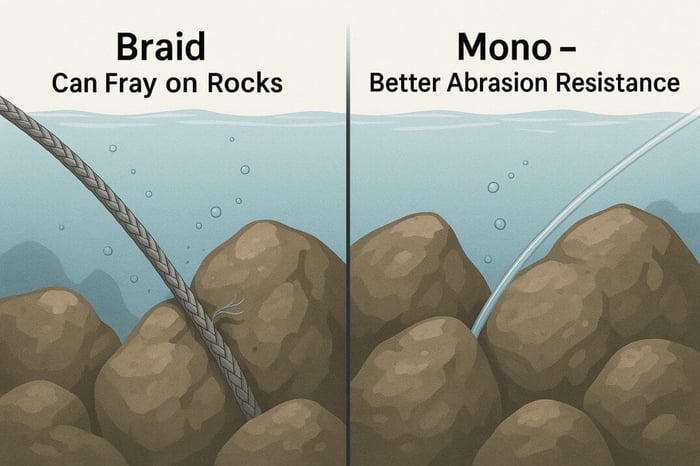
The thing about braided line is that it has a small diameter, but the strength is impressive.
A 20-pound braid is roughly the same size as 6-pound mono line.
Basically, that means being able to carry more line on smaller reels.
But at the same time, it still has the strength to haul fish out of thick cover.
Offshore fishermen appreciate this when they need extra line to handle long runs.
Bass fishing enthusiasts adore it since they can cast heavy braid on a small reel.
And if the situation calls for it, they can still flip into dense cover.
Mono, however, has a higher diameter at the same pound test.
That increased diameter provides it with a high abrasion resistance.
But obviously, it also occupies more room on the spool.
Let's examine its stretching "power"
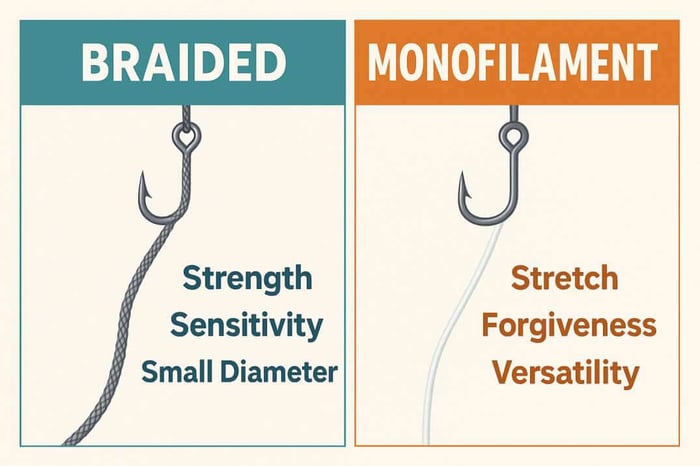
Mono does stretch. Approximately 20 to 30 percent.
That stretch cushion shocks when a large fish makes a sudden dash.
It also keeps treble hooks lodged because the fish can't eject them as readily.
Braided line is low-stretch, honestly, ALMOST NO stretch at all, so it passes on every tap and bounce.
That sensitivity is ideal for bed fishing and jigging.
Or generally, where you must feel a light bite in clear water.
But no stretch equals less cushion.
If you are trolling subsurface baits, mono fishing line is usually the better choice.
Do they handle rough spots?
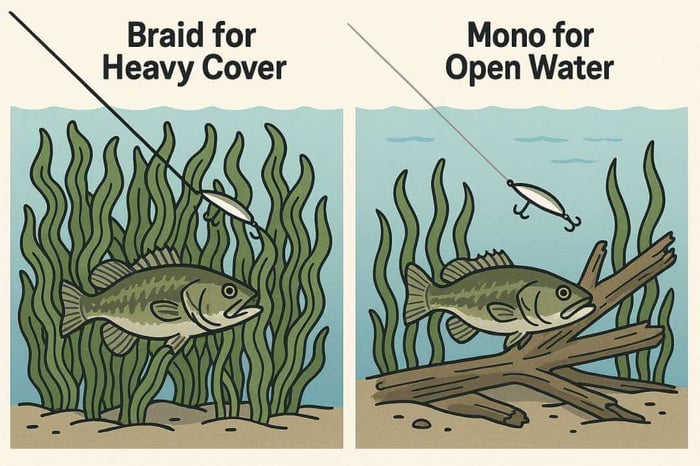
Abrasion resistance is another major difference.
Monofilament fishing line has a rounded and heavier profile.
This is why it's well-suited to razor-sharp rocks, wood, or other cover.
It might nick, but it takes abuse.
Braid is rugged in its own manner.
Heavy braid can saw through submerged plant life and thick grass.
That makes it the line of choice when you are fishing in heavy cover.
But truth be told, braid does not enjoy rough edges. Take note of that.
On barnacles or rough rock, it frays quicker than mono.
Others suggest that the best approach is to spool up a fluorocarbon leader or even mono to provide braid with some sort of protection.
Floating or sinking?
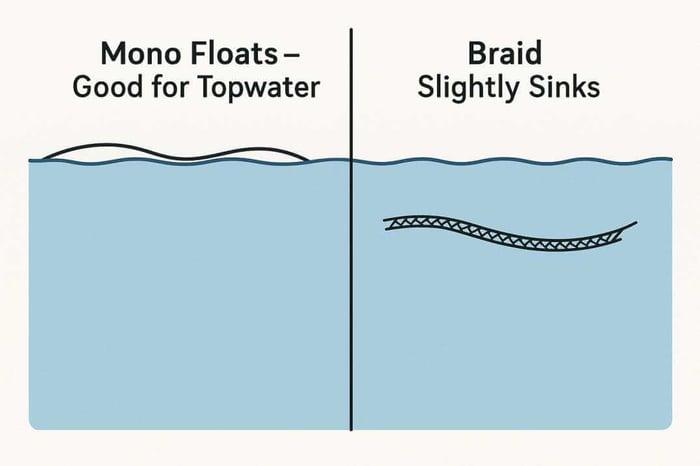
Mono floats initially, making it ideal for surface baits or live bait fishing.
It allows the lure to remain effective where you prefer.
Braid floats as well, but does not sink in the same manner.
That is more ideal for long drifts, frog fishing, and buzzbaits.
Fluoro sinks, and as a result, anglers prefer to use it as a leader to counter mono.
Being aware of which line floats and which one sinks helps maintain lures within the strike zone.
What knots to make?
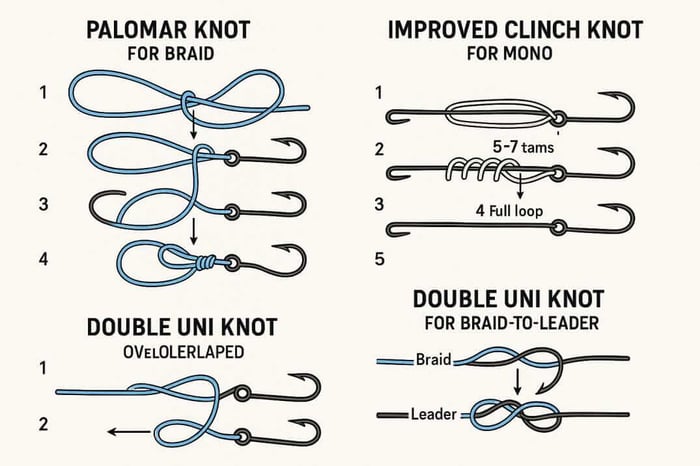
Mono lines tie up easily and retain knots well. A basic clinch knot works fine.
They are forgiving even with a thick line.
Braided line is slippery. If you cinch the wrong knot, it slides off.
That is why most anglers use knots such as the Palomar or double uni knot when attaching braid to a fluorocarbon leader.
Braided line casts a long way and is limp, but it will also make wind knots on spinning reels if not handled properly.
Mono coils up and has more memory, but honestly? It's better suited for newbies.
What fish see?
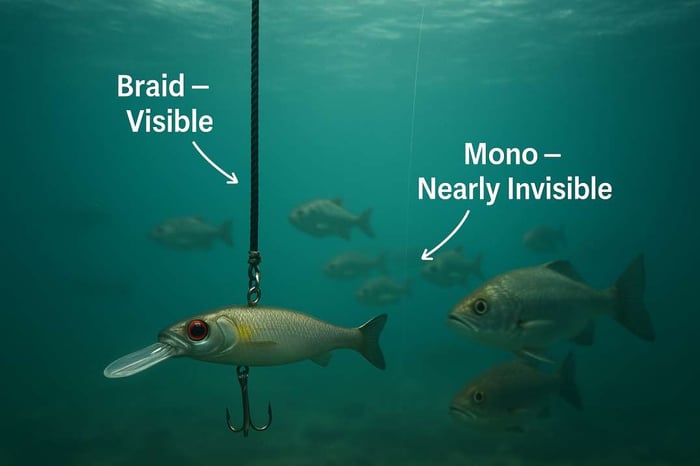
One of the biggest arguments against braided line versus mono is visibility.
Mono blends in, particularly clear mono line in clear water.
The low visibility makes it handy in shallow flats or if fish are line-shy.
Braid is visible above and below the water.
That is why many anglers spool on a fluorocarbon leader.
There is a color-coded braid that can follow a line in low light or while fishing in thick cover, but the fish can still see it.
And honestly, visibility is less important for big game in open water. For very obvious reasons, we all know.
For clear pond bed fishing, low-stretch braid is often paired with a leader.
When to Use Braided Line?
Braided line isn't always the solution, but under the right conditions, it's a HUGE game changer.
• One of the most obvious benefits of braid appears under heavy cover.
Largemouth bass fishing among lily pads, reeds, or submerged weeds is impossible with mono line.
Which means that braided line is key here.
Braid cuts through that thick cover so that you can yank fish straight out.
Bed fishing in tight confines honestly needs heavy braid.
This just helps the line drag fish out without giving an inch.
Even the most seasoned angler with mono really loses the fish in such circumstances.
With braid as the primary line, you can depend on the rod and haul bass out.
And yes, even in thick vegetation. If you use other lines, it would not have survived at all.
• Offshore fishermen rely on braid when pursuing large game.
The reduced diameter equates to more line on the spool.
I just can't stress how important it is when a tuna or other heavy quarry takes a long run.
Surfcasting enthusiasts prefer how braid casts further and withstands current and waves.
Braid, in deep-sea jigging, has virtually no stretch.
So, you can feel every bounce of the lure hundreds of feet below.
Hollow core braid is even used for direct splicing leaders.
It actually does a pretty good job in providing a clean, durable connection for anglers after a huge fish.
• Braided line excels when you require long-distance casts and high sensitivity.
Thin braid on smaller reels allows you to cast finesse jigs.
Each bump on the bottom and each light bite comes directly up the rod due to the low stretch.
That information enables anglers to react quicker and hook more fish.
In shallow flats, braided lines make longer casts with less weight.
This very much helps maintain the bait further away from the boat.
It is also an excellent line for power fishing.
This is especially true when used with a fluoro leader for subsurface baits in clear water.
• Wind knots are a pain with any line, but braid handles them better when applied properly.
Braid is smaller in diameter at the same pound test.
For this very reason, it lies flat on spinning reels and casts farther, even under adverse conditions.
Spooling light braid on spinning equipment often has anglers reporting that it feels smoother.
And somehow, more manageable in the wind.
And yes, that's compared to mono fishing line of the same diameter.
• Most pros do not use straight braid exclusively.
They tie on a fluorocarbon leader using a double uni knot or an FG knot to equalize the rig.
It provides the best of both worlds: braid's power and casting range with fluoro's low visibility and abrasion protection.
That combination is used in local tournaments and on the big stage, too.
It is an easy trick. But honestly, it really brings confidence in clear water and around sharp rocks.
When to Use Monofilament?
It might not be as hip as braid has become, but it does what braid simply can't.
If you fish hard enough, you begin to understand why so many anglers never spool up without having at least one reel loaded with mono line.
• When you prefer topwater strikes, mono is your buddy.
Mono floats, and as a result, walking baits and poppers remain where they should.
That slight stretch prevents treble hooks from pulling loose when a fish explodes and slams hard.
Practically speaking, it's designed for topwater bass fishing.
Casting with a buzzbait on braid might work.
But then again, mono has it sitting just so and provides you with that cushion when the fish jump.
So, why not go for it?
• Mono is easy.
Tie a knot, cast, and fish.
It won't slip on you like a braid, and it won't reward you for a sloppy knot.
That's why so many new anglers begin with monofilament fishing line.
Even on spinning reels, it accommodates. You don't struggle with wind knots all day.
For many anglers, mono is the line they return to when they simply want a peaceful day without babysitting their equipment.
• When it's icy in the air and the guides begin to freeze, braiding can be hell.
It wicks water and becomes hard.
Mono remains useful. Trout men, river men, anyone fishing in the cold.
They use mono when it counts.
It's consistent even when the weather isn't. Which is more often than you think.
• Mono excels when you're wetting bait or attempting a natural drift.
It has just the right amount of elasticity, so the bait works the way it should.
Catfishing anglers prefer heavy mono for this.
Lower-cost spools allow you to load large reels without breaking the bank.
Plus, it still has the strength for large fish, too!
• Mono has a role to play in close-in conditions as well.
Casting around piers, fishing under bridges, or working a crankbait alongside a stump.
These ALL make use of mono's stretch.
It eases the struggle and allows lures to have the proper action.
Some offshore anglers even use a mono topshot on top of braid just to provide that abrasion resistance for sharp edges or heavy cover.
Become A Hybrid!

Many serious anglers don't take sides in the braided line vs mono situation. Why? They simply use both.
The secret is effortless. Use braided line as the main line, and then attach a fluorocarbon leader or even a brief section of mono line. You get the good of each without the bad.
Braid provides high sensitivity, fine diameter, and more line on smaller reels. Leader provides low visibility and abrasion resistance in the vicinity of sharp rocks or other structures.
A fluorocarbon leader is standard in clear water since fluoro sinks and disappears. Mono leaders are more visible in surfcasting. Offshore anglers use them as shock leaders to absorb heavy line and big fish runs.
It is simple to tie them together once you get the hang of it. Most use a double uni knot. Some prefer an FG knot if they want the neatest connection for extended casts.
Honestly, they're both applicable anywhere!
Bass fishing rigs tend to have braid to a fluorocarbon leader when finesse is involved.
Bed fishing in shallow flats is also helped with the same trick.
Saltwater rigs employ braid with a mono topshot to insulate from thick cover and heavy weeds.
This mix covers almost every fishing trick without forcing one line to do it all. I mean, you don't have to pick a side. That's the point.
Do NOT Fall For These
Choosing the correct line is not merely a question of strength.
There are many anglers who learn that the hard way.
(1) One of the largest mistakes is to spool braid solely because it sounds stronger.
Braided fishing line is less stretchy and has a thinner diameter. However, note that this will cost you fish in clear water. Without a fluorocarbon leader, the line is just too visible. It's just so hard to work with.
(2) Another mistake appears with heavy cover frog fishing.
Some fishermen put on monofilament fishing line. Mono floats, but it lacks the pulling strength.
When a bass plunges into thick vegetation, the mono line stretches and snaps. Heavy braid is the proper line for doing that work because it pulls fish straight out of dense cover.
(3) Knots are a weak link as well.
Not all knots with all lines. An FG or double uni knot is a very safe way to connect the braid to the fluoro leader. Mono lines and fluoro leaders also accommodate simple knots more easily.
To ignore this is simply not a good idea. It may seem haphazard until you notice the knot was just too "wrong" for the line.
(4) The final mistake is not balancing the line to the rod and reel.
A light braid on a rigid rod feels odd. Too heavy a line on small reels kills the casting distance.
